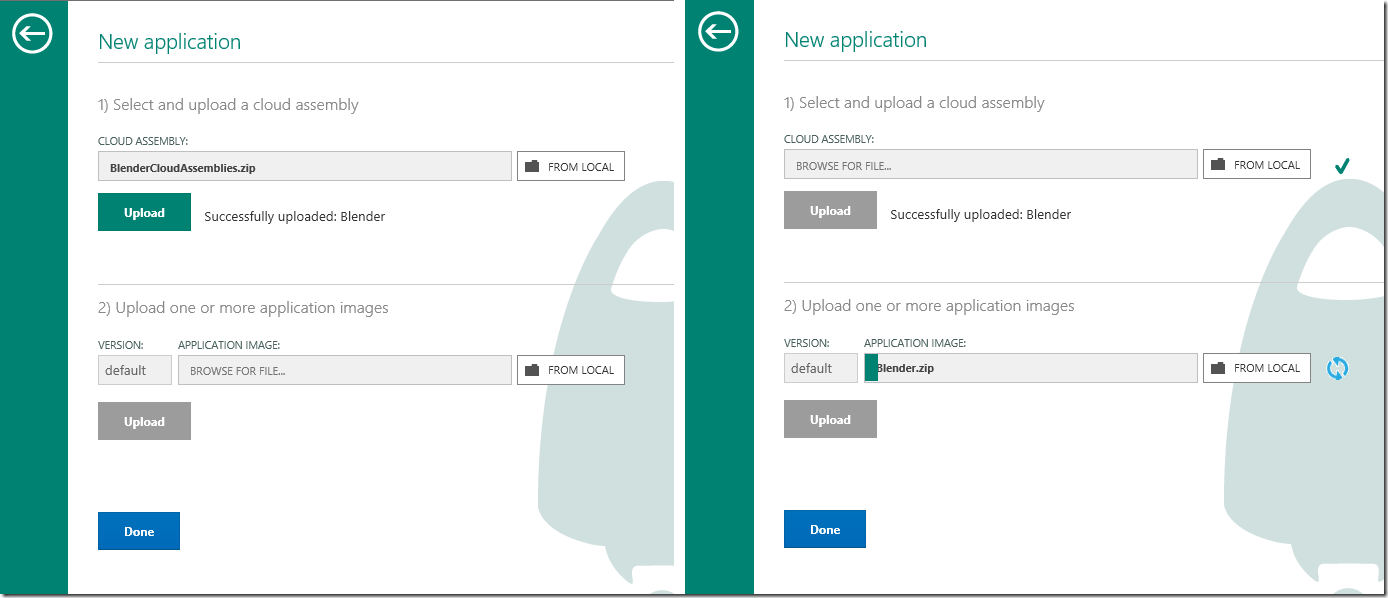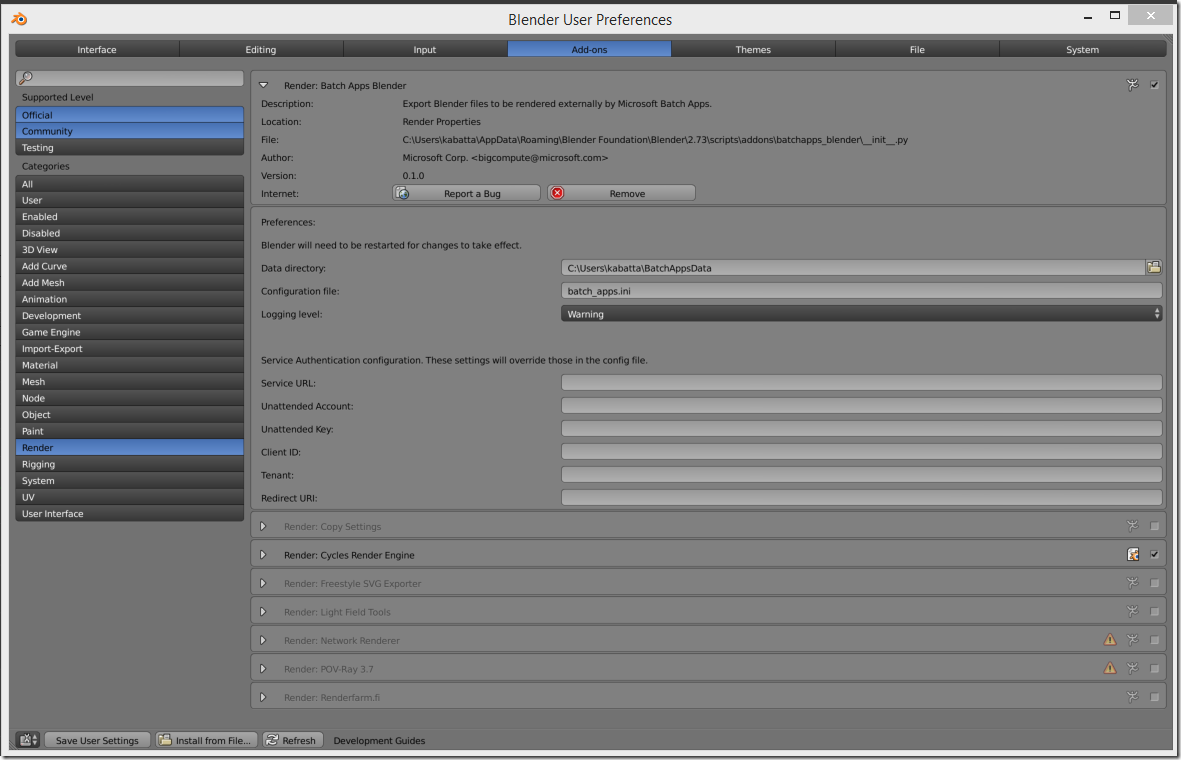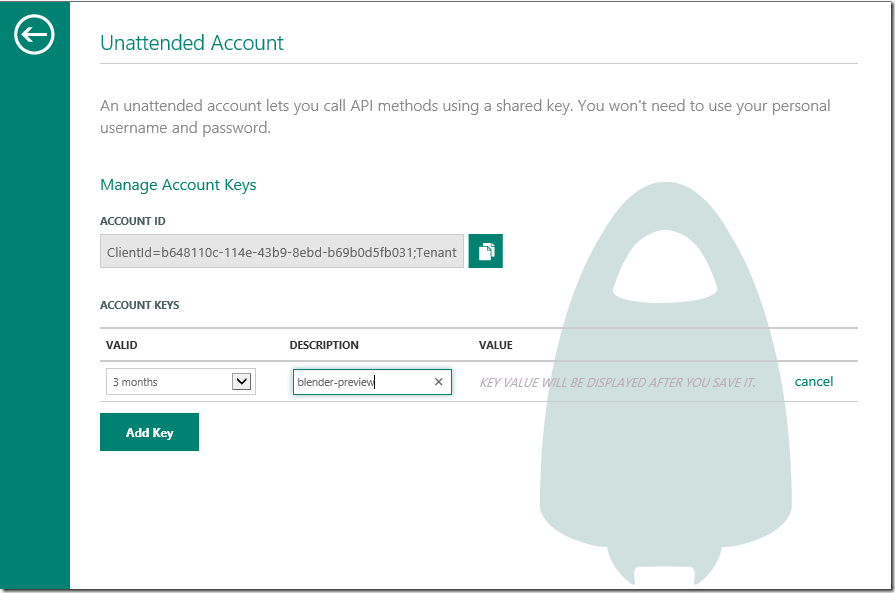Microsoft News: R support, new Power BI for analytics and reports, animation and 3D graphics in the cloud
Over the past few days, three fairly large and serious events have occurred in the Microsoft ecosystem at once, unrelated to each other, but somehow belonging to services in the cloud and, more interestingly, to science and research . In order not to write three news, we decided to combine them into one. Read more - under the cut.
So:
In October, we announced a publicly available preview of the Azure Batch service. Read more in SychevIgor in the appropriate post . In short - the service provides the ability to easily organize calculations in the cloud. You download the application, everything is automatically deployed in the cloud, the result is calculated and returned.
Yesterday, a set of examples of using Blender in Azure Batch was announced. Blender is a free Open Source package for 3D animation that supports modeling, animation, simulation, game creation, and others. This package is used both by developers and small studios - the process requires equipment. The cloud here has an obvious use - they calculated and turned off the equipment. In the case of Azure Batch, you do not need to turn off anything - just run, get the result and not use until the next need.
')
On GitHub, two components will be released that implement uploading rendering tasks to Azure Batch. The first server component uses the .NET SDK and divides the task of animation into a pack of subtasks, each of which is performed on its own virtual machine. The second client component, written in Python, and designed to manage tasks from Blender.
C # Blender code can be found here . It needs to be deployed to Azure Batch from the management portal. If the Batch account is not yet available, you can sign it up using the instructions . After that, click on “Manage Batch Apps” to configure Blender.

Create a new application and download the downloaded assemblies.

That's all, Blender is configured.
Client plugin can be downloaded here . You can install it from User Preferences inside Blender by selecting the Install from file option. Authentication data needs to be taken from the portal from the Batch account.


Client plugin ready to go.
Blender Add-On Documentation
Batch Apps Python Library & Documentation
Batch Apps Library for .Net
Azure Batch Forum
Azure batch
Big Compute & HPC Blog
Scott Guthrie blog post about Azure Batch
Examples are on GitHub under the MIT license. Questions can be asked to the development team at askbatch@microsoft.com
The second news is that Microsoft has reached an agreement to acquire Revolution Analytics . Revolution Analytics is a leader in commercial software development and services for R. Acquisition of this company means new functionality and opportunities for customers to use R to analyze and get interesting insights from data. Due to the constant increase in the amount of data, companies interacting with them need high-performance resources located “close” to the data. At the same time, it is necessary that the use of these resources be efficient.
Revolution Analytics provides an enterprise-level platform for developing and deploying R-based analytics solutions that can be scaled across data warehouses and Hadoop, as well as integrated with internal systems. Revolution Analytics is also an important part of the R community with more than 2 million users worldwide and regular contributions to Open Source projects on R - ParallelR and RHadoop.

Visualization of R , tied to the processes of national teams at the World Cup . Source: Guy Abel
The value of the acquisition of this company can not be overestimated - it helps customers use advanced data analytics tools. Microsoft will continue to support the community and projects, both Open Source and commercial on various operating systems.
Read more from David Smith, the chief community officer in Revolution Analytics, here .
The new Power BI is a service that can greatly affect the BI industry. Power BI helps to adapt the process of interaction with data with simple utilities and technologies that reduce the barrier to entry.
Power BI is a cloud analytics service for non-technical business representatives. It can be used from a browser or in a mobile application that provides convenient management portals for exploring data, building visual reports and integrating with existing data sources.
Since yesterday, Power BI has become available in the preview, and access is quite simple:
So far, internationally Power BI is unavailable, only for American e-mail. In the future, Power BI will be available for everyone, and with a free version and Power BI Pro based on monthly payments. More about payment and service here .
Microsoft continues to produce not only services that are useful for commercial users, but also those that will be very useful for researchers, users from academic institutions, students, etc. This is a very good trend!
So:
- An open - source package for 3 D -benancies Blender is available for use with our support in Microsoft Azure Batch , a service for performing series of calculations in the cloud.
- Microsoft has reached an agreement on the acquisition of Revolution Analytics - the leading developer of software and services for R. As you know, R is one of the most used languages for predictive analytics and static analysis. The agreement with a reputable company in this area, with great expertise, means new functionality and opportunities for developers.
- Announcement of Power BI Preview - a cloud service for business intelligence for non-technical business users.
Open-source package for 3D-animation Blender became available in Azure Batch
In October, we announced a publicly available preview of the Azure Batch service. Read more in SychevIgor in the appropriate post . In short - the service provides the ability to easily organize calculations in the cloud. You download the application, everything is automatically deployed in the cloud, the result is calculated and returned.
Yesterday, a set of examples of using Blender in Azure Batch was announced. Blender is a free Open Source package for 3D animation that supports modeling, animation, simulation, game creation, and others. This package is used both by developers and small studios - the process requires equipment. The cloud here has an obvious use - they calculated and turned off the equipment. In the case of Azure Batch, you do not need to turn off anything - just run, get the result and not use until the next need.
')
On GitHub, two components will be released that implement uploading rendering tasks to Azure Batch. The first server component uses the .NET SDK and divides the task of animation into a pack of subtasks, each of which is performed on its own virtual machine. The second client component, written in Python, and designed to manage tasks from Blender.
C # Blender code can be found here . It needs to be deployed to Azure Batch from the management portal. If the Batch account is not yet available, you can sign it up using the instructions . After that, click on “Manage Batch Apps” to configure Blender.

Create a new application and download the downloaded assemblies.

That's all, Blender is configured.
Blender Client Plugin
Client plugin can be downloaded here . You can install it from User Preferences inside Blender by selecting the Install from file option. Authentication data needs to be taken from the portal from the Batch account.


Client plugin ready to go.
More details:
Blender Add-On Documentation
Batch Apps Python Library & Documentation
Batch Apps Library for .Net
Azure Batch Forum
Azure batch
Big Compute & HPC Blog
Scott Guthrie blog post about Azure Batch
Examples are on GitHub under the MIT license. Questions can be asked to the development team at askbatch@microsoft.com
Microsoft has reached an agreement to acquire Revolution Analytics
The second news is that Microsoft has reached an agreement to acquire Revolution Analytics . Revolution Analytics is a leader in commercial software development and services for R. Acquisition of this company means new functionality and opportunities for customers to use R to analyze and get interesting insights from data. Due to the constant increase in the amount of data, companies interacting with them need high-performance resources located “close” to the data. At the same time, it is necessary that the use of these resources be efficient.
Revolution Analytics provides an enterprise-level platform for developing and deploying R-based analytics solutions that can be scaled across data warehouses and Hadoop, as well as integrated with internal systems. Revolution Analytics is also an important part of the R community with more than 2 million users worldwide and regular contributions to Open Source projects on R - ParallelR and RHadoop.

Visualization of R , tied to the processes of national teams at the World Cup . Source: Guy Abel
The value of the acquisition of this company can not be overestimated - it helps customers use advanced data analytics tools. Microsoft will continue to support the community and projects, both Open Source and commercial on various operating systems.
Read more from David Smith, the chief community officer in Revolution Analytics, here .
Power BI Preview Preview
The new Power BI is a service that can greatly affect the BI industry. Power BI helps to adapt the process of interaction with data with simple utilities and technologies that reduce the barrier to entry.
Power BI is a cloud analytics service for non-technical business representatives. It can be used from a browser or in a mobile application that provides convenient management portals for exploring data, building visual reports and integrating with existing data sources.
Since yesterday, Power BI has become available in the preview, and access is quite simple:
- Sign up - all you need is an e-mail
- Connect data sources using embedded connectors and adapters - GitHub, Marketo, Microsoft Dynamics CRM, Salesforce, SendGrid, Zendesk, and others that are just about to be released - Inkling Markets, Intuit, Microsoft Dynamics Marketing, Sage, Sumo Logic, Visual Studio Application Insights, Visual Studio Online. Power BI is inherently hybrid service, so you can use local data.
- Start using Power BI Designer - a tool for business analysts to connect, model and analyze data.
- If you have an iPad, we have released Power BI for iPad, available on the Apple App Store. Later we will release versions for the iPhone, Android and Windows Universal App.
So far, internationally Power BI is unavailable, only for American e-mail. In the future, Power BI will be available for everyone, and with a free version and Power BI Pro based on monthly payments. More about payment and service here .
Conclusion
Microsoft continues to produce not only services that are useful for commercial users, but also those that will be very useful for researchers, users from academic institutions, students, etc. This is a very good trend!
Source: https://habr.com/ru/post/249079/
All Articles